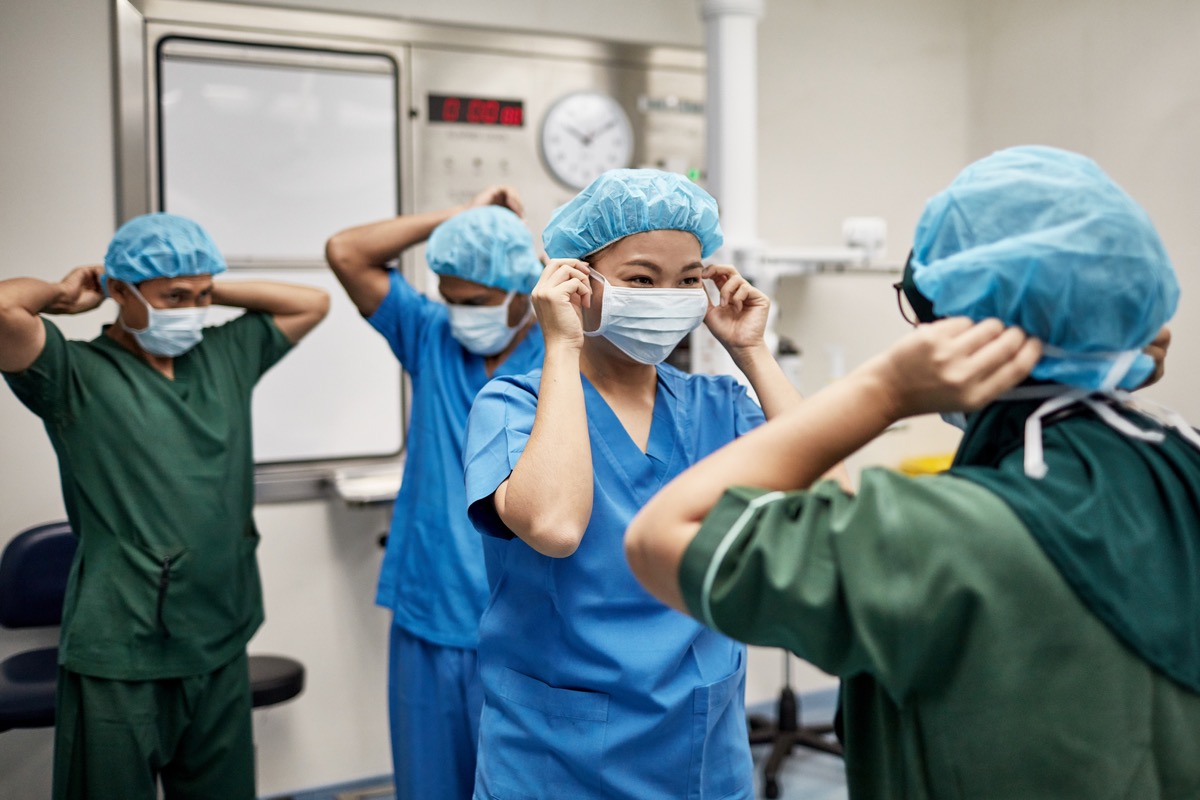The study, which was published in the journal The Lancet Public Health, observed 2 million people in the United Kingdom and United States between March and April, all of whom used the COVID Symptom Study app created by Zoe Global. The researchers found that in the general community, there were 242 cases per 100,000 people. But looking at healthcare workers, those numbers started to climb. Out of the 2 million users, 99,795 were frontline healthcare workers and the prevalence of COVID among them was 2,747 cases per 100,000—that’s 11.35 times higher than the average person.ae0fcc31ae342fd3a1346ebb1f342fcb However, after taking into account other factors, like the likelihood of receiving a COVID test at a medical facility, researchers determined that even when using personal protective equipment (PPE), frontline healthcare workers were still at least three times more likely to get the coronavirus than the general public. And for Black, Asian, and other minority healthcare workers, the infection risk was even higher. BIPOC (Black, Indigenous, people of color) were at least five times more likely to get the coronavirus, compared to the non-Hispanic white community. “The findings of our study have tremendous impact for healthcare workers and hospitals,” Sebastien Ourselin, PhD, senior author of the study, said in a statement. “The data is clear in revealing that there is still an elevated risk of SARS-CoV-2 infection despite availability of PPE.” RELATED: For more up-to-date information, sign up for our daily newsletter. The researchers also noted that the “reuse of PPE or inadequate PPE” came with an even greater increased risk of contracting COVID-19. This is especially troubling considering the PPE shortage that’s been plaguing healthcare workers in the U.S. In California, for example, a lack of sufficient PPE may have infected 20,860 essential workers and members of their households, who would have otherwise not gotten the virus, according to a recent study from the University of California Berkeley Labor Center. The lack of sufficient PPE was also behind the racial disparity among healthcare workers in the new Lancet Public Health study, the researchers note. “Non-white healthcare workers were disproportionately affected by scant PPE adequacy,” they wrote. They were also “more likely to work in clinical settings with greater exposure to patients with COVID-19.” In fact, the study highlighted two healthcare settings where the likelihood of getting the coronavirus was highest: inpatient settings and nursing homes. The highest reported reuse of PPE was in inpatient settings and the highest reported occurrence of inadequate PPE was among those working in nursing homes, according to the study. Overall, the exceptionally high COVID-19 risk for frontline healthcare workers shines a light on the need for increased observation of those working with coronavirus patients—especially when it comes to PPE. The researchers believe their study highlights “the importance of not only ensuring PPE quality and availability but also other aspects of appropriate use, including correct application and removal of PPE and clinical situation.” The authors also stress the importance of increasing testing for these workers to help reduce hospital-based COVID transmission, which could be a huge source of community spread. And for another dangerous place amid the pandemic, check out This One Place Is Where You’re Most Likely to Get COVID, Study Finds.
